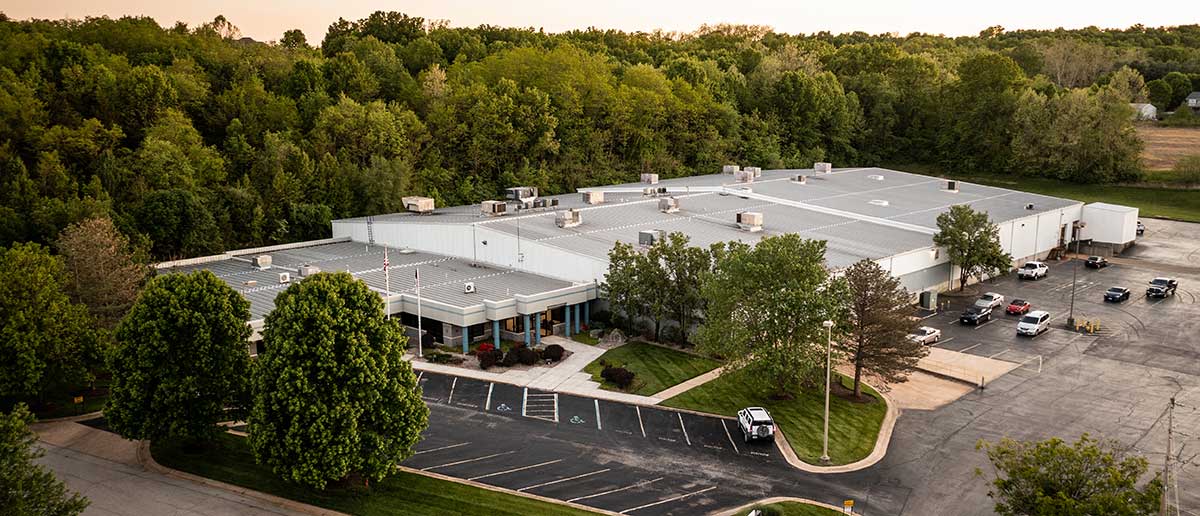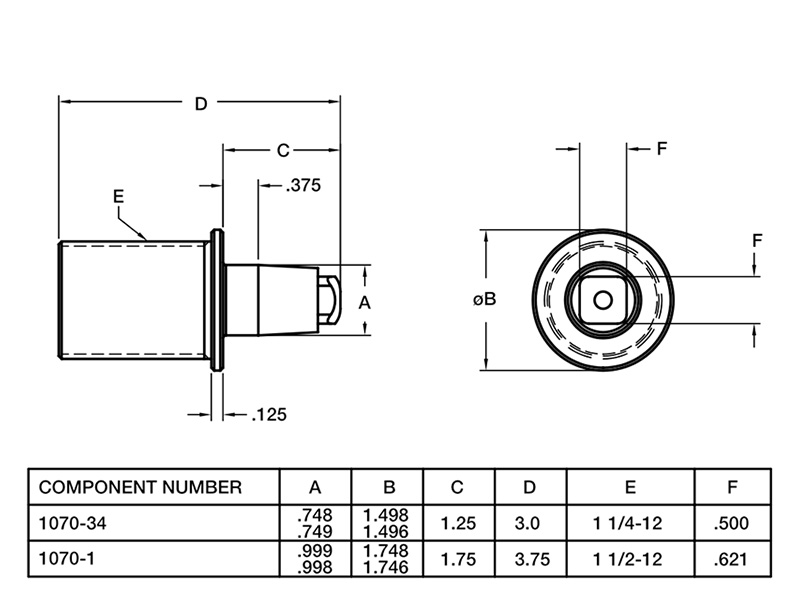
0
You have 0 items in your cart
- Home
- Tooling & Automation
- Companies & Capabilities
- Segen Quick Change
- News
- Resources
- About Us
- Contact Us

GH Tool & Mold is a leading provider of high-pressure die cast dies, designing and building dies for machines with locking forces from 350 to 6,000 tons. We partner with customers to develop castings that are lightweight, manufacturing-friendly, and able to meet design intent.
GH Tool & Mold is an award-winning supplier in the aerospace industry and recognized for its expertise across the entire die cast industry.
Our die cast tooling experience extends across many applications and industries, including aerospace, automotive, lawn and garden, powersports, heavy equipment and more.
Long recognized for our world-class high-pressure die casts, we also are experienced in providing tooling for low-pressure and gravity die casting.
When you partner with GH Tool & Mold, every aspect of your project is handled in-house by our experienced staff — from concept through machining to finished product. This allows us to stay on top of quality across the continuum while ensuring on-time delivery.
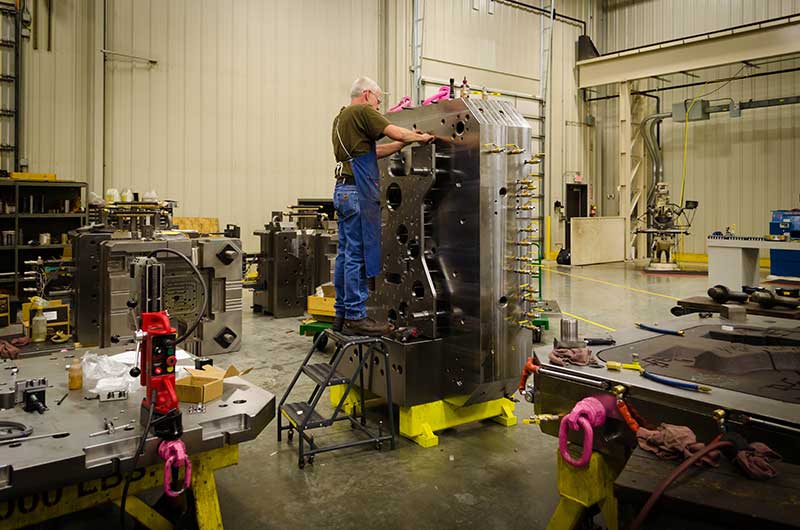
Our engineering department is proficient in multiple CAD/ CAM programs, developing solid models at the start of the project for engineering analysis, flow and thermal simulation, process development, part print creation and tool design. And overseeing the entire process, our project engineers make sure we meet project scope, cost and delivery requirements.
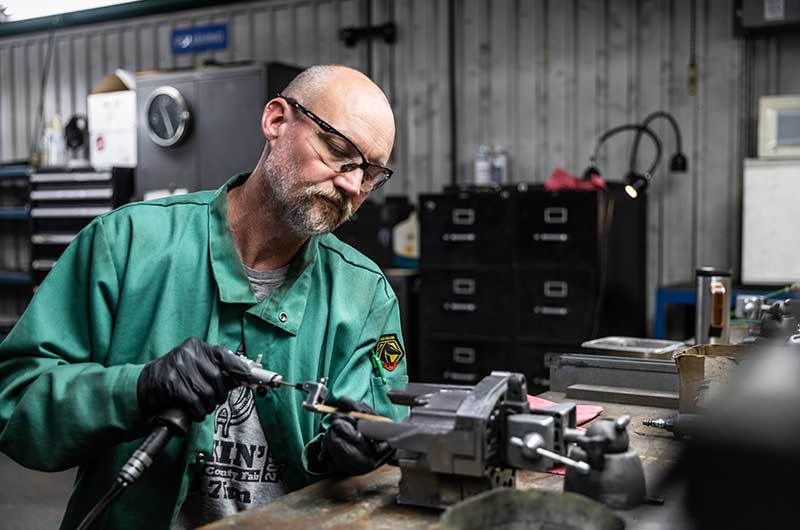
We maintain a dedicated repair area to address urgent repairs, refurbishments, and routine tooling maintenance. Our service team has its own CNC machining centers, welding department, and high-resolution 3D optical scanners for measurement and inspection of dies.
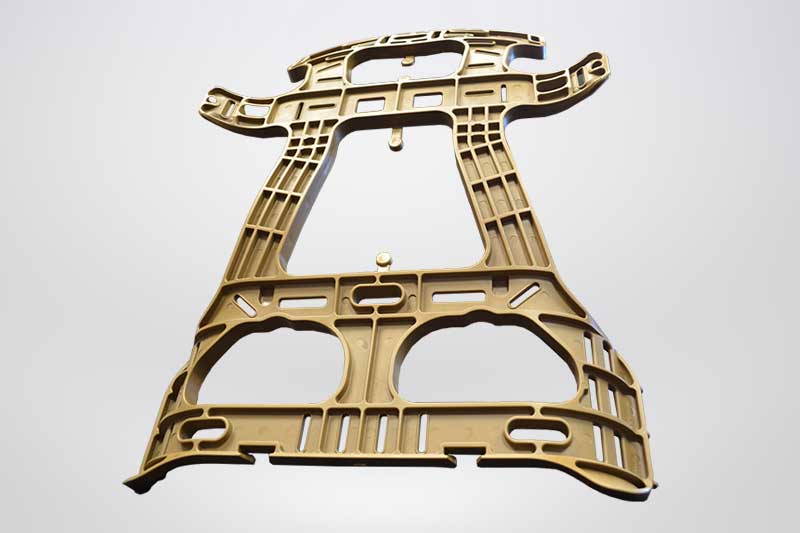
We specialize in producing high-precision injection molding tools for automotive, consumer goods, and other industries. Using advanced engineering, CNC machining, and innovative mold-making techniques, we create durable, reliable tools tailored to meet exacting standards. Our expertise ensures that each tool supports high-volume production with exceptional accuracy and efficiency.

GH Tool & Mold is experienced in providing dies for aluminum cast powertrain and structural parts across a broad range of automotive applications, including items such as engine blocks, transmission housings, shock towers, structural rails, valve bodies, e-motor housings, standard housings, battery trays, etc. Our capability encompasses tooling for internal combustion engine vehicles (ICE), battery-electrified vehicles (BEV) and hybrid vehicles.
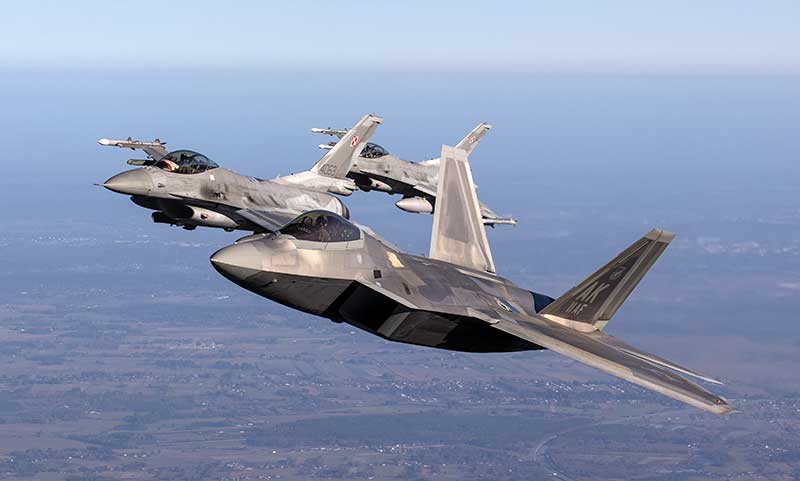
Our engineers are experts in building tooling and fixtures for high-level aerospace and defense programs during the manufacturing process, as well as for maintenance, repair and overhaul. We are experts in resolving difficult part-holding applications, enabling you to achieve the level of accuracy and repeatability required for your process.
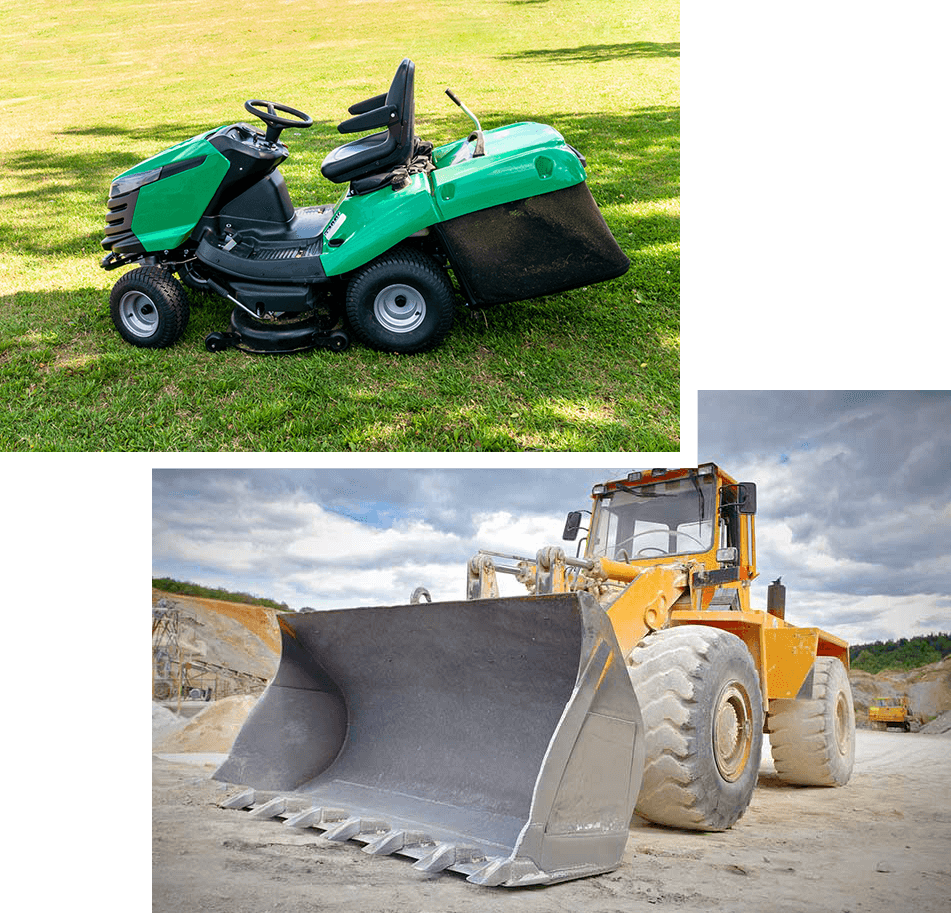
GH Tool & Mold can provide you with die cast tooling to produce lawn and garden and powersports equipment, such as lawnmowers and UTVs. With our precise tooling designs and processes, manufacturers can achieve high levels of accuracy and consistency in their production, resulting in finished components that meet strict quality standards.
When it comes to off-road equipment or heavy-duty trucks, we provide tooling for producing various components such as engine parts, hydraulic systems, and structural frames. These tools are designed with intricate details that allow for complex shapes and designs to be accurately reproduced with each casting.

Utilizing advanced engineering, CNC machining, and innovative mold-making techniques, we deliver durable and reliable tools designed to meet the highest standards. Our expertise guarantees that each tool supports high-volume production with outstanding accuracy and efficiency.
At GH Tool, our facilities are stocked with state-of-the art equipment run by highly skilled machine operators to ensure we deliver to you the highest quality molds, dies and fixtures.
Click on an item below to view details.
| MANUFACTURER | CNC MILLS DESCRIPTION | X TRAVEL | Y TRAVEL | Z TRAVEL | TABLE | RPM | WEIGHT CAPACITY |
|---|---|---|---|---|---|---|---|
| FPT | RAID VERTICAL MILL | 59 | 43.3 | 23.6 | 18,000 | 7,000 lbs | |
| FPT | RAID VERTICAL MILL | 59 | 43.3 | 23.6 | 18,000 | 7,000 lbs | |
| FPT | RAID XL VERTICAL MILL | 79 | 55.1 | 31.5 | 18,000 | 8,000 lbs | |
| FPT | RAID VERTICAL MILL | 59 | 43.3 | 23.6 | 18,000 | 7,000 lbs | |
| FPT | RAID VERTICAL MILL | 59 | 43.3 | 23.6 | 18,000 | 7,000 lbs | |
| Mori-Seiki | NV5000a1A/40 Machining Center | 31.5 | 20.1 | 20.1 | 14,000 | 2,200 lbs | |
| OKK | VP9000 CNC Mill | 44.1 | 36.2 | 22 | 20,000 | 3,300 lbs | |
| OKK | VM7 III | 60.25 | 29.1 | 26 | 13,000 | 3,300 lbs | |
| OKK | VM53R | 41.4 | 20.9 | 20 | 10,000 | 1,750 lbs | |
| OKK | VM940R | 81.1 | 37 | 32.3 | 8,000 | 6,600 lbs | |
| Hurco | Machining Cntr, Vertical CNC, | ||||||
| Hurco | MACHINING CENTER CNC | ||||||
| Fidia | 5-Axis CNC Horiz Mill | 106 | 43.25 | 39.3 | 24,000 | 30,000 lbs | |
| Fidia | 5-Axis CNC Horiz Mill | 65 | 29.5 | 33.5 | 24000 | 15200 lbs | |
| Hurco | Mill, Std Mill | ||||||
| MAG | Horizontal Boring Mill, CNC | 98.5 | 102.5 | 78 | 360 Deg Rotary | 3,500 | 55,000 lbs |
| Mazak | Mill, Horizontal, | 41.3 | 35.4 | 38.5 | 360 Deg Rotary | 8,000 | 3,500 lbs |
| Mikron | HSM800 Machining Center | 31.5 | 23.6 | 19.7 | 24,000 | 1,750 lbs | |
| Mikron | HSM500 Machining Center | 19.7 | 17.75 | 13.8 | 42,000 | 300 lbs | |
| Mikron | HSM500 Machining Center | 19.7 | 17.75 | 13.8 | 42,000 | 300 lbs | |
| Mikron | HSM800 Machining Center | 31.5 | 23.6 | 19.7 | 36,000 | 2,000 lbs | |
| Mikron | HSM800 Machining Center | 31.5 | 23.6 | 19.7 | 24,000 | 2,200 lbs | |
| Mikron | HSM800 Machining Center | 31.5 | 23.6 | 19.7 | 24,000 | 2,200 lbs | |
| Mikron | HPM800U.HD 5 Axis Machining Center | 31.5 | 31.5 | 26.6 | 360 Deg rotary | 20,000 | 1,750 lbs |
| Mikron | HSM800 Machining Center | 31.5 | 23.6 | 19.7 | 24,000 | 2,200 lbs | |
| Mikron | HPM800U.HD 5 Axis Machining Center | 31.5 | 31.5 | 26.6 | 360 Deg Rotary | 20,000 | 1,750 lbs |
| Pratt&Whitney | Mill, Horizontal, | 97 | 58.5 | 26.5 | 3,500 | 30,000 lbs | |
| Mori-Seiki | SV503/40 Machining Center | 31.5 | 20.1 | 20.1 | 10,000 | 2,200 lbs | |
| Mori-Seiki | SV503B/40 Machining Center | 40.2 | 20.1 | 20.1 | 10,000 | 2,240 lbs | |
| Mori-Seiki | SV400 Machining Center | 23.6 | 16.9 | 18.1 | 12,000 | 1,100 lbs | |
| OKK | Machining Center, Vert CNC | 60 | 25.6 | 25.6 | 6,000 | 4,400 lbs | |
| OKK | Machining Center, Vert CNC | 80 | 33.9 | 28 | 6,000 | 6,600 lbs | |
| OKK | Machining Center, Vert CNC | 40.1 | 20.1 | 20 | 10,000 | 1,800 lbs | |
| OKK | Machining Center, Vert CNC | 40.2 | 20.1 | 20 | 10,000 | 1,800 lbs | |
| OKK | Machining Center, Vert CNC | 81.1 | 37 | 32.3 | 12,000 | 6,600 lbs | |
| OKK | Machining Center, Vert CNC | 80 | 33.9 | 28 | 6,000 | 6,600 lbs | |
| HERMLE | C52U Trunion 5 Axis Machining center | 39.4 | 43.4 | 29.5 | 360 Deg Rotary | 18,000 | 4,400 lbs |
| Toyoda | Vertical Bridge Mill, CNC | 120 | 63 | 31.5 | 6000 | 22,000 lbs | |
| Okuma | Machining Center, Vertical, double column (Q4 2020) | 165 | 104 | 72 | interchangeable head | 6000 | 70,000 lbs |
| MANUFACTURER | CNC LATHE DESCRIPTION | X TRAVEL | Y TRAVEL | Z TRAVEL | RPM | WEIGHT CAPACITY |
|---|---|---|---|---|---|---|
| Mazak | Turning Center | |||||
| Okuma |
Lathe, CNC, (Old L-003) |
| MANUFACTURER | EDM DESCRIPTION | X TRAVEL | Y TRAVEL | Z TRAVEL | WEIGHT CAPACITY |
|---|---|---|---|---|---|
| Charmillies | EDM, RoboForm 4000 | 18 | 12 | 16 | 1800 lbs |
| Charmillies | EDM, RoboForm 4000 | 18 | 12 | 16 | 1800 lbs |
| Charmillies | EDM, RoboForm 400 | 35.4 | 27.6 | 19.7 | 6600 lbs |
| Charmillies | EDM, RoboForm 400 | 35.4 | 27.6 | 19.7 | 6600 lbs |
| Charmillies | EDM, RoboForm 400 | 35.4 | 27.6 | 19.7 | 6600 lbs |
| MANUFACTURER | SPECIALTY DESCRIPTION | X TRAVEL | Y TRAVEL | Z TRAVEL | WEIGHT CAPACITY | |
|---|---|---|---|---|---|---|
| ATOS/GOM | Blue Light Digital Scanner (ATOS Triple Scan) | 8MP | ||||
| ATOS/GOM | Blue Light Digital Scanner (ATOS Triple Scan) | 16MP | ||||
| Alphlaser | 500 watt laser welder | |||||
| Prosperous | Prosperous Hydraulic Spotting Press | 126 | 98.5 | 106″ open ht | 80″ stroke | 300 ton |
| Metal Mechanics | Press, Trim, 35 Ton | |||||
| GH | Wax Shot | 1500 cu in |
| MANUFACTURER | MISC. DESCRIPTION | X TRAVEL | Y TRAVEL | Z TRAVEL | RPM | WEIGHT CAPACITY |
|---|---|---|---|---|---|---|
| P&H | Crane, Bridge, 5 ton | 5 ton | ||||
| P&H | Crane, Bridge, 3 ton | 3 Ton | ||||
| P&H | Crane, 3 Ton, | 2 Ton | ||||
| P&H | Crane, 2 Ton, | 3 Ton | ||||
| Wright | Crane, Bridge, 5 Ton, | 5 Ton | ||||
| Yale | Crane, Bridge, 15 Ton, 5 ton Aux, | 15/5 Ton | ||||
| Wright | Crane, Bridge, 5 Ton, 3 Ton Aux. | 5/3 Ton | ||||
| Wright | Crane, Bridge, 15 Ton, 5 Ton Aux, | 15/5 Ton | ||||
| Wright | Crane, Bridge, 5 Ton, 3 Ton Aux, | 5/3 Ton | ||||
| Wright | Crane, Bridge, 3 Ton, | 3 Ton | ||||
| Wright | Crane, Bridge, 3 Ton, 2 Ton Aux, | 3/2 Ton | ||||
| Wright | Crane, Bridge, 15 Ton, | 15 Ton | ||||
| Coffing | Crane, 3 Ton, | 3 Ton | ||||
| Kranco | Crane, Bridge, 25 Ton, 10 Ton Aux. | 25/10 Ton | ||||
| Kranco | Crane, Bridge, 25 Ton, 10 Ton Aux. | 25/10 Ton | ||||
| Kone | Crane, Bridge, Hoist, 10, 5 Ton Aux, | 10/5 Ton | ||||
| Kone | Crane, Bridge, Hoist, 40 Ton, 20 Ton, Aux. | 40/20 Ton | ||||
| Handling Systems | Crane, Bridge, 60 Ton, 30 Ton Aux, (Q4 2020) | 60/30 Ton | ||||
| Handling Systems | Crane, Bridge, 60 Ton, 30 Ton Aux, (Q4 2020) | 60/30 Ton | ||||
| Blackstone Ney | ULTRASONIC CLEANER | |||||
| AEC | Die Heater | |||||
| AEC | Die Heater | |||||
| Munici | RE2-1450A Drill, Radial Arm | |||||
| Ooya | RE2-1250 Drill, Radial Arm | |||||
| Technidrill | Gun Drill Machine, TechniDrill | 72 | 48 | 60 | 360 Deg Rotary | 12.5 Ton |
| Furnace, Stress Relief | ||||||
| Unitherm | Furnace, Heat Treat | |||||
| Unitherm | Furnace, Heat Treat | |||||
| Epiloglaser | Laser Engraver | |||||
| Caser | Drill, Radial Arm | |||||
| Brown & Sharpe | CMM, Brown & Sharpe | 27.5 | 40 | 19.7 | DCC | 1 Ton |
| Brown & Sharpe | CMM, Brown & Sharpe | 17.5 | 20 | 14 | DCC | 1/2 Ton |
| Brown & Sharpe | CMM, Brown & Sharpe | 36 | 48 | 34 | DCC | 2 Ton |
| Brown & Sharpe | CMM, Brown & Sharpe | 28 | 28 | 20 | DCC | 1/2 Ton |
| Brown & Sharpe | CMM | 48 | 80 | 40 | DCC | 2 7/8 Ton |
| Romer | Romer Arm, CMM | |||||
| Dayton | Press, Hydraulic, 35 Ton | |||||
| Brown & Sharp | CMM | 60 | 120 | 40 | 3 Ton |
Main Office:
28 Chamber Drive
Washington, Missouri 63090
Our Certifications Include:
Request a Quote

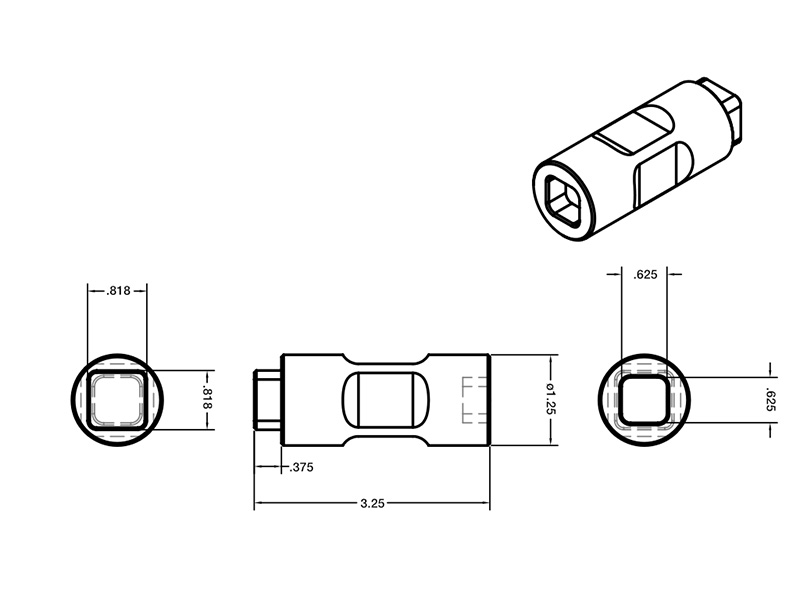
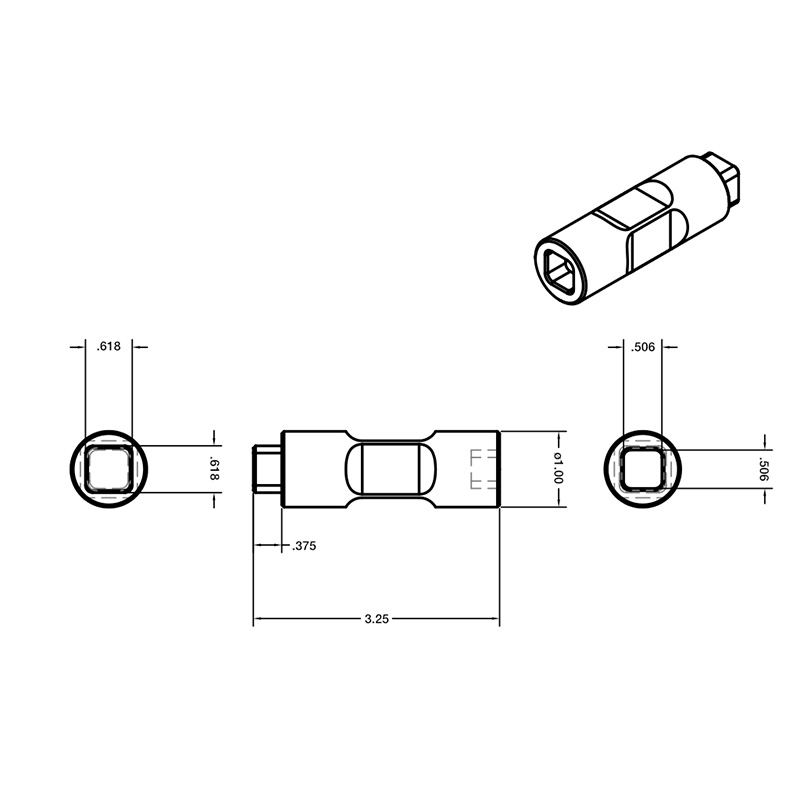
Proprietary Joining Solutions for Big Boy Toys
In this process, the heavy truck components (about 5-ft x 7-ft in size) are kept in a glue/bond apply station where a robot travels along a shuttle applying the adhesive to the different stations. The operator then manually loads the components in the front half of the cell and six components on the other side of the cell. The side with six components pivots up and is merged with the stationary side with the three components. The cycle then starts where cylinders are engaged to apply the pressure to finalize the bond
Combining Manual and Automated Processes
In this instance our customer asked us to develop a process to bond steel and composite brackets, apply glue and drill holes in a new 2.5 ft x 4 ft component in right-hand and left-hand styles.
In our process, the operator loads the component into the drill where six holes are drilled. The operator then takes the part and puts it into a loading nest where the robot picks up the part and moves it under a stationary dispensing head that applies the glue for the bracket reinforcements. While the glue is being applied, the operator is loading the brackets into the next station. Once these actions are completed, the robot then loads the part into the nest at the manual station and the assembly press closes automatically to complete the bonding process. A mix of two to three operators and one robot results in an efficient cycle time of 3 to 3.5 minutes
Confidential Design to Processing Multiple Part Styles
Our customer provided us the spec sheet outlining the time, temperature and recipe for a foam mix that needed to be applied in order to complete the manufacture of four different composite components.
We developed an automated dual line solution with two 6-axis robots and two shuttles functioning as axis 7 and 8 as the shuttle movements are interlocked with the robots. The operator loads the component on the fixture device and as the shuttle moves, the first robot arm is programmed to apply the foam. This robot then moves out of the way and the second robot moves in and measures the foam bead via a laser measuring system to ensure the right amount was applied. This robot then picks and place the component in the oven. Overall cycle time is 85.9 seconds.
From Four Machines to a Single Line
Our customer needed to produce two versions of a composite automotive part that required the routing of 100 holes and the application of 65 float nuts along with some rivet studs. In addition, they wanted a fully automated solution with +0.25mm tolerance on the holes, zero dust emission and a cycle time of just over three minutes. The customer thought it would take four machines to accomplish this.
Tooling Tech developed a solution that could route all the holes in a single orientation during a continuous process while using a minimum amount of floorspace. The process starts with the operator manually loading the part on a wall fixture where the automated cycle then starts. The part is clamped in place, the part style verified via a sensor, and several holes are drilled. The wall then rotates 180 degrees and a handling robot picks up the part and places it into the route cell where four robots cut about 65 holes. Each robot has a vacuum unit at its head and collects the dust during the routing process.
The handling robot then moves the part to the rivet nut station where two robots apply 66 float nuts, fed to the robots via a pneumatic tube. The nuts go in and are crimped using amperage as an indicator if the nut is properly secured. At the end of this process, all six robots communicate with the material handling robot to determine good or bad part.
Eliminating Human Error
We supplied our customer with a solution for welding two components together, where clinch nuts were already pressed in prior to welding. After welding, manual processes included the insertion of two push pins for a wiring harness operation and the application of a piece of double-sided tape. However, 10 – 15% of the components were being sent to quarantine due to missing parts.
Tooling Tech developed a fixturing station for assembly and a checking station to verify part presence. Once the part is welded, it is manually moved to the assembly station where the pin and tape are put in place. The part is then moved to the checking station where the part is clamped in place, and it goes through an automated checking cycle. Using a variety of sensors, the presence of the tape, clinch nuts and pins are all verified. This has saved the customer about $10,000/week.
In these days of lightweighting, it’s not only performance vehicles that benefit from composite structures. Introduced in 1987, the Jeep Wrangler has become an icon and popular across the world. With the 2018 model re-design, engineers were able to drop 200 pounds from the vehicle by employing aluminum bodywork and composite hardtop panels, with molds supplied by Tooling Tech Group. The frame is also 100 pounds lighter through extensive use of high strength steel.
Originally introduced in 2010, this performance truck shed 500 pounds in its 2017 iteration with a new aluminum body as well as composite hood and front fenders. This 2018 model has the same features, proving that lightweight materials can tough out off-road driving.
From the sleekest and sexiest of vehicles to the biggest boys on the highway, Tooling Tech Group provides molds for many heavy truck manufacturers. When you look at the size of these cabs, you can just imagine the weight reduction being achieved by the usage of composite materials.
This vehicle, commemorating the movie Bullitt starring Steve McQueen, was ‘the thing” at the 2018 Detroit Auto Show. To match the original movie car, this version is light on external badging and painted in the same dark green. However, the original was a steel vehicle and today’s version features composite panels.
Ford’s research into improved efficiency through weight reduction with advanced materials including new metals, alloys and composites began more than 25 years ago. Although the new 2019 Ranger features a high strength steel frame, the company is employing composite truck beds and body panels to help reduce vehicle weight. Other highlights include frame-mounted steel bumpers, an aluminum hood and tailgate, and standard automatic emergency braking and rearview camera.
Tooling Tech Group has long history of providing compression molds for various body panels on the Chevrolet Corvette, most recently providing the molds, bonding, drilling and assembly equipment for the C-7 and C-8 Stingray and Z06. The C6 Z06, introduced in 2006, was recognized for its use of advanced materials including an aluminum frame, magnesium roof structure, engine cradle and other suspension attachment points as well as light-weight, high-strength composite panels for the front fenders, front wheelhouses and rear fenders.
